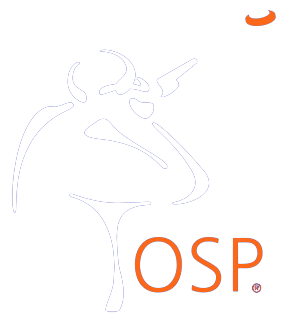A Morning on the Prairie
I can remember hunting geese with David Jones, my next-door neighbor at the time, years ago. I hadn’t considered just how many years ago it was until I was invited on a goose hunt by Larry Gore of Katy Prairie Outfitters. I mentioned to Larry that back when I hunted geese, we put out rag spreads, first with diapers, and then with plastic rags. Veteran goose hunters know what I’m talking about; it was a lot of work. Since I had never been on a guided goose hunt, I accepted Larry’s offer.
We chose a day based more on our schedules than the weather. I called one of our students, Dean Olsen, and asked if he and his son Daniel would like to join us, and they agreed. The day before the hunt, I stopped by Johnnie’s Sport Shop in Eagle Lake, Texas, and talked to the owner about some ammo. He was as high on Hevi-Shot as the price tag. I wanted to compare Hevi-Shot to steel on geese, so I picked up some Kent Fast Steel 3-inch BBB’s, along with some Hevi-Shot 2 ¾-inch #4’s and #2’s. I was ready.
We met Larry the next morning at 4:45 a.m. in Eagle Lake and drove to the field. The plan was to meet up with another hunting party from out of town to combine resources in putting out the spread on the premise that many hands make light work. As we trudged out into the rice field, many memories of hunts gone by began to flow through my mind. Committed, Dean, Daniel, and I pushed forward through the mud to the hunting spot, and upon arrival, I got my first surprise. Doug Riggins, one of our guides, handed me a bundle of sticks with plastic wrapped around them. As I unrolled the plastic, I realized that each stick had a piece of plastic tied to it that formed a windsock. These windsock decoys are made here in Houston, Texas by Texas Hunting Products. Doug showed us how to adjust it and open it up so it would catch the wind. All we had to do was push the stick into the mud, and the decoy was set. Man, were they easy to put out! I could see how the wind would keep them moving and make them life-like. I later learned that we had put out 700 to 800 decoys, all in less than 30 minutes!
We were setting up on a levee in the middle of a rice field. We put out decoys on both sides of the levee. We were expecting a light north wind, so the plan was to hide on the north side of the levee, and the birds would come into the spread from the south. The decoys on the north side of the levee were almost all white, and the decoys on the south side had a section with all dark decoys in it. The reason for this would become clear later that morning.
With the decoys set, we had a safety briefing in which we were told to only shoot in one direction and to keep still until the guide called the shot. Doug explained that we had a few minutes before shooting time, and he would tell us when to load our guns to begin the hunt. He also made it very clear that the safety needed to remain on until you were mounting your gun to shoot after he or Chris called the shot. He added that when the shooting stopped, everyone needed to put their guns back on safety before reloading and getting back down on the levee to wait for the next group of birds. Some teal and a few big ducks began to buzz the spread, and in the distance, we could hear the geese begin to wake up. The guides said, “Load ’em up and put on your face masks.”
It was a chamber of commerce day – but not what you’d call an ideal day to hunt geese. Not a cloud in the sky and very little breeze, with the temperature around 40. Lying on that levee on my back as the sun pushed its golden glow up into the dark blue sky, I was speechless, watching the flocks of ducks parade through the sky. Dean remarked at how beautiful they were in the warm glow of the early morning light. The show was interrupted when the guides said, “Get ready, geese approaching from the left!”
The geese filtered in to our spread in ones, twos, and small flocks. After the first shots were fired that morning, I asked Dean what kind of ammo he and Daniel were using. He said they were using Hevi-Shot, so I stuck with my Kent Fast Steel BBB’s to see if I could see any difference in results between the two. I watched Dean and Daniel make some impressive one-shot kills between 35 and 45 yards. I held my own using steel shot and made my share of good clean kills when I put the gun in the right place. Although Hevi-Shot is impressive when it hits a goose, not everyone can afford to shoot ammo that costs $2.00 a shot to hunt waterfowl. I felt that when I did my part by placing the shot where it needed to be, the steel shot did its job, too.
During a lull, I asked Chris what he considered the ideal weather for goose hunting. “A cloudy, overcast sky with a 10 mph southeast wind seems to make the birds finish better,” Chris replied. I asked what he meant by “finish better.” Chris explained that with no wind like we had that day, the birds could approach the spread and land from any direction. This made it hard to hide and harder to set the decoys up so that everyone in the group could get good shots. If we had a wind, not only would the geese always approach the spread from the same direction, but the spread would also look more realistic with the windsocks bobbing in the breeze.
Doug then chimed in and explained that hunting under a low pressure is better than a high pressure like we had that day. “Geese fly high under a high pressure and low under a low pressure,” Doug said. I then asked about how fog affects their approach to setting up for geese. They both agreed that when hunting in a fog, you should set up on bare ground, not in a field with ground cover like the rice field we were in that morning. Their read on the reason for that was that the geese can’t see as well in the fog, and they seem to feel more secure from predators when landing in a field that has no ground cover. Doug said, “When I hunt in the fog, I set my decoys up in dirt (bare ground), not stubble or grass.”
It was about then that an eagle flew over our spread, headed toward a field about 600 yards away that held a large flock of geese. Doug instructed, “Get down and get ready!” I asked why, and he answered, “Just watch.” As the eagle approached that field of geese, they exploded into the air in all directions like kids on the last day of school. What followed was some great shooting for all in our party. After the volley was over, Chris explained that geese have that reaction not only to eagles, but to hawks as well.
I then asked Doug why he set up the spread with almost all white decoys on the north side of the levee and most of the dark decoys together as a group on the south side. He explained that when he scouted this field the day before, this was the way the geese were set up and the exact place they were feeding. According to Doug, they typically do their scouting in the afternoon, not only looking for where the geese are but also the shape of the flock in the field. Is the flock configuration long and narrow, round, more like a teardrop or an hourglass? Are the dark geese mixed in with the white geese, or are they segregated? If segregated, where in the flock are the majority of the dark geese? When the guides set their spread the next morning, they duplicate as closely as possible the position, shape, size, and mix of dark and light geese as it was in the field the previous evening. They feel that there is a reason that the configuration is the way it is and the segregation is the way it is. Those birds like it that way. Why is not as important as what it is. Of course, Chris was quick to point out that you can do everything your experience has taught you and you can feel great about your set up and your chances for a great hunt, and still get burned.
I guess the same can be said about all fishing and hunting trips. The game animals that we pursue with such passion know and do things that we interpret in different ways. And, like people, they are collectively similar, but each is unique in that they all have the freedom to make their own choices. I guess the best we can hope for is to give ourselves the opportunity to have our desires and preparation coincide with their activities. If it happens, it happens. If it doesn’t, it doesn’t. My late Uncle Dusty Garrett said to me many times while deer hunting, “Nephew, if it’s in the cards for you to kill a big deer, it’s going to happen. But even if it’s in the cards, your chances are not very good if you’re sitting around camp watching football on TV.”
All in all, we had a great hunt in spite of the weather. With liberal bag limits and tons of birds no more than an hour outside of Houston, you just might want to give Larry Gore a call (281-391-6100) to experience a morning on the prairie and bag a few geese for the pot.

